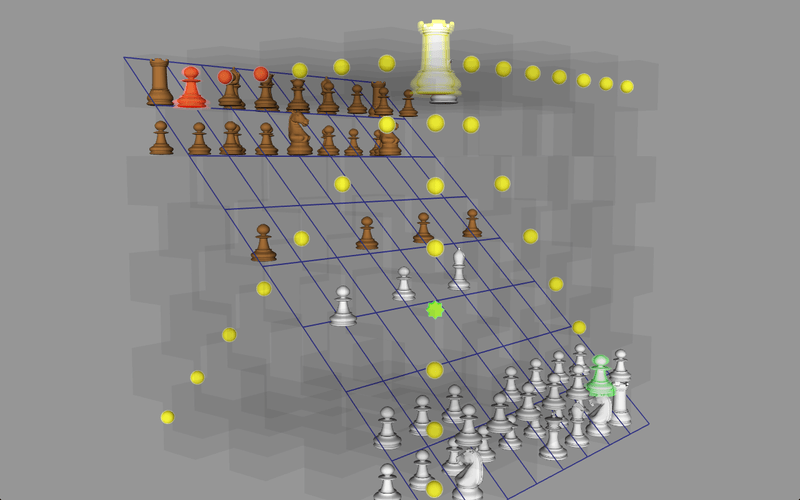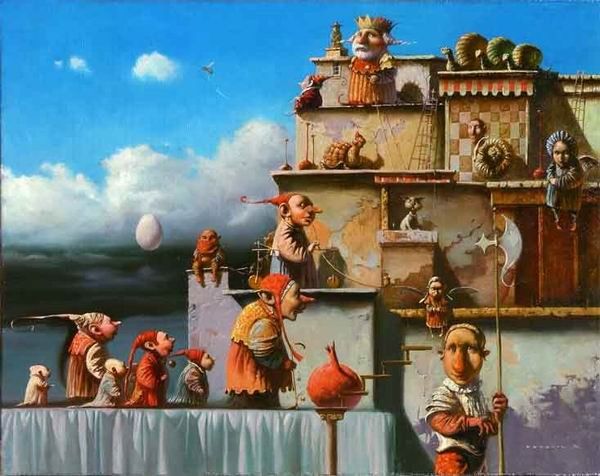
PRINCIPIA SCACCHORUM, Part 7: How Cosmic Force is Pushing and Pulling Your Chessmen
Black Queen, white King: what is the law of fatal attraction? They are always flirting. Which may sometimes turn ugly into a -- lethal attraction, when She mates Him.
In Part 6 we saw what chess is made up of at the lowest possible, atomic level:
1) Chessmen skills
1a) Control effect*
1b) Body effect
1c) Mobility
2) Relationships with Friends and Enemies
2a) Attacking contact** (including threat of attack and multiple attack)
2b) Kill (capture)
3) Purpose
Na, na, na, na, na, and that's all, baby - that's the chess core.
All (chess) life unfolds by following the threat-attack-kill (or, if you are lucky, threat-attack-capture) dynamics, depending on which side of the line of attack you are. This dynamics represents the universal law of Chess, Life and Struggle in cosmic proportions. The main force in it is, well, Force, acting in Space-Time. The entire Universe, all of it, all of us, all of our chessmen, are pushed, pulled, spun, shifted, set in motion, held together by this invisible Force (living with its daughters, their beautiful names being Gravity, Electromagnetica, and two nuclear twins, Fortis and Claudia).
The same, of course, applies to our beloved ancient game. It is though a big mystery to me why this Living Force is completely out of the picture when we teach chess? Although it keeps itself hidden, it makes itself felt all the time playing with us. With each move. The motion merely serves the threat-attack and attack-kill life cycles. You corner the victim first. Then you execute. The movement serves both these actions.
Now the question is this: What gives you, and your chessmen, strength to hold against all these forces, in order not to become a victim, and what tells you it is the right moment to launch an attack yourself?
The constitution, anatomy, shape, form, structure, construction, architecture, arrangement, configuration, makeup, composition, organization, layout, order, setup, grouping, network, disposition, distribution, design, alignment, positioning, uuh, of your troops.
This formation should follow function, purpose, goals, aims, ends, objectives, intents, plans, targets, in the same way as this principle is the touchstone for all architects. Actually, as Frank Lloyd Wright lived it with his masterpieces, form and function should be one, joined in a spiritual union (see what Roaring Pawn had to say about it in Part 6, the Chess Axioms).
So what are the basic elements of power structure in chess, similar to what beams and columns are in construction?
The board power structure composed of 1a, 2a and 2b above. Purpose (3) helped by mobility (1c) has the role to change this structure.
Geometrically speaking, the basic structural element in chess is always a straight line in space from a chessman to a square/along a line, or a contact between a chessman and another (friendly or enemy) piece. The brain manages this structure much better by using functional relationships that establish between pieces during game, instead of geometrical ones.
Next time, we will see all these functional relationships that chessmen get into, all the time, move after move, during fierce chess battles. The relationships that form a power structure. The connections that give the reason for every move!
There are only four of them. Let's check.
NOTE:
* 1a and 2a differ only in that 1a) influences space (squares), while 2) impacts enemy men.
** From the attacking contact derive three more piece contacts as per GM Averbakh
Tags: chess education, chess basics, chess fundamentals, piece relationships, piece contacts, attack in chess
